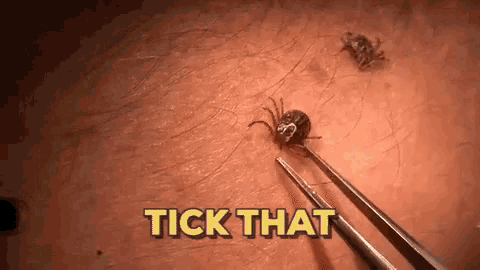Written by Alexandra Fuhs
Edited by Jocelyn Wang and Shania Sheth
Hello everyone! This article is a feature piece that focuses on Lyme Disease. Lyme disease is a prevalent disease in the United States, which impacts many individuals. Read on to learn about how Lyme Disease occurs, and to hear testimonials from people who have Lyme Disease.
------------------------------------------------------------------------------------------------------------------------------------------------------------------------------------------------------------------------
Lyme disease is a bacterial infection predominantly found in the United States and is most commonly caused by the bacteria Borrelia burgdorferi. This bacteria is spread through the bite of an infected blacklegged (or deer) tick, which are found along the coastal U.S., parts of the Midwest, and more recently in Canada due to climate change. The early signs of Lyme are a rash that forms a bullseye, a fever, chills, and fatigue, among other symptoms. Months after the initial infection, symptoms can include joint pain and neurological problems such as meningitis and Bell’s palsy.

Image: The bullseye rash that often characterizes a case of Lyme disease
You are most likely to get bitten by a tick in grassy and heavily wooded areas, so it’s important to take precautions. While some cases of Lyme can be cured with a 2-4 week course of oral antibiotics, other patients experience symptoms for months after treatment. This is known as “Post-Treatment Lyme Disease Syndrome (PTLDS)” and occurs in 10-20% of all Lyme disease cases. Scientists currently don’t know what causes some people to develop this condition and what results in their symptoms.
Heather’s Experience
After vacationing in Massachusetts one summer, Heather woke up to pain in her back and legs as well as a fever and fatigue. Her doctor found a bullseye rash on her stomach and diagnosed her with Lyme disease after further studying her symptoms and learning about her recent vacation. Heather was prescribed a round of antibiotics, which helped at first, but her joint pain continued to worsen. Her doctor prescribed a second round of antibiotics, which is sometimes recommended for those whose symptoms don’t improve after the first round.
After the second round, Heather’s joint pain improved, but she felt unusually lethargic for the rest of the summer. It took about four months for her to get back to her active lifestyle. She says, “I wanted to share my story to let people know that it can take a long time to feel better after having Lyme disease. Even though you might want to get out and climb a mountain, your body needs time to recover from what it’s been through.”

Problems After Lyme
Only about 7% of patients are diagnosed and treated within the 30-day window essential to resolve the condition’s issues. More than half wait two years or more for a proper diagnosis, increasing the likelihood that they will have lingering problems after a round of antibiotics. These delays can arise due to the difficulty of finding a conclusive diagnosis: many cases don’t develop the characteristic bullseye rash, a possible lack of knowledge of the symptoms of Lyme, or the fact that the symptoms of Post-Treatment Lyme Disease Syndrome are similar to many other chronic diseases. The 10-20% of people who develop PTLDS can face cognitive disorders, pain, and chronic fatigue, among other symptoms.

PTLDS can result in debilitating musculoskeletal pain, a slower processing speed, and extreme levels of fatigue. These symptoms may be frustrating for patients, who are often dismissed by doctors after tests return negative for Lyme disease. For some people (like Heather), the symptoms disappear after months, but others face the daily exhaustion of dealing with a myriad of tiring, painful symptoms for years after their original diagnosis. Some individuals choose to take natural supplements in hopes of alleviating their pain, but will face a long road to recovery regardless as symptoms inevitably take months or even years to go away.
Despite the various challenges, many patients are optimistic and use their experience to draw attention to PTLDS. Crystal Pauley, a former physician assistant with lingering Lyme symptoms has become an advocate for lower healthcare costs after going through many treatments in an effort to alleviate her symptoms. Shelbie Bertolasi, a stay-at-home mother who has been battling PTLDS since 2015, is currently writing a Lyme-friendly cookbook to chronicle recipes that have helped her. Judy Stevens describes living with these symptoms as “like a full-time job,” but also wants people to know that “It’s really easy to go down the road of ‘poor me,’ but it is possible to get better.
There is hope. You can reach remission.”
------------------------------------------------------------------------------------------------------------------------------------------------------------------------------------------------------------------------Thanks for reading this feature article on Lyme disease; we hope you learned a lot! If you enjoyed reading this article, check out our Children's Eye Health Month article before August is over, written by Nihitha Anepally!
See you later,
Alexandra and the Writing Committee :)
References:
CDC. “Lyme Disease Stories”, 21 December 2018.
Mayo Clinic. “Lyme disease”. Diseases & Conditions, 24 October 2020.
BJGP Open. “Supporting patients with long-term problems after Lyme disease”, 2020.
Wisconsin Public Radio. “Living with Lyme: Wisconsin’s ‘chronic Lyme’ patients embrace alternative treatments, rack up big bills”, Zhen Wang, June 11 2022.